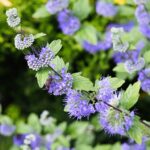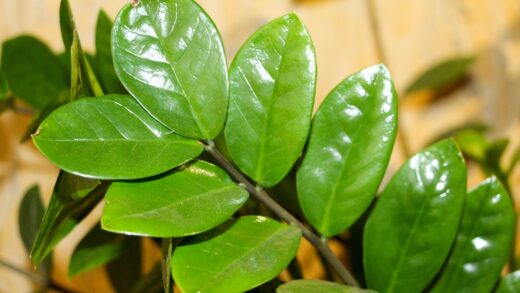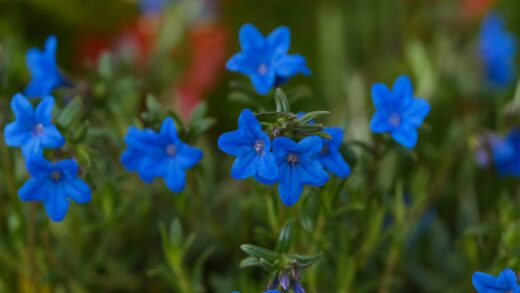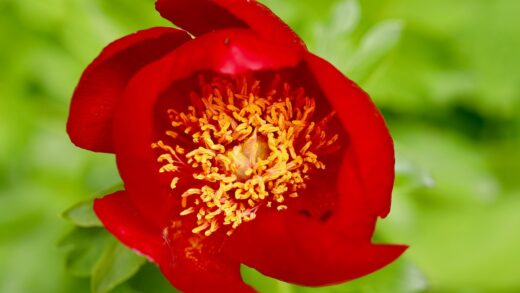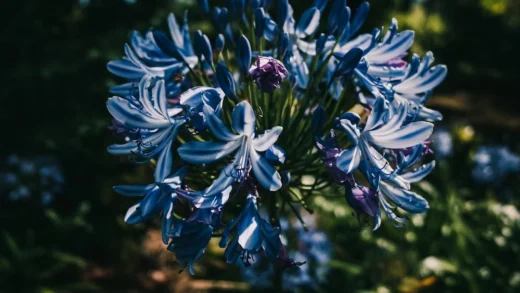The amount of light an elecampane plant receives is one of the most significant factors influencing its overall health, size, and flowering performance. As a plant that naturally thrives in open, sunny locations like meadows and woodland edges, its fundamental need for sunlight is encoded in its genetics. Providing the correct light exposure in a garden setting is crucial for replicating these ideal conditions and allowing the plant to reach its full, majestic potential. Understanding the nuances of what constitutes “full sun” versus “partial shade” and recognizing the signs of improper light exposure are key skills for any gardener wishing to cultivate this impressive perennial successfully.
At its core, elecampane is a sun-loving plant. It performs best when it receives at least six to eight hours of direct, unfiltered sunlight per day. This substantial amount of light is necessary to fuel the process of photosynthesis, which converts light energy into the chemical energy the plant needs to build its large leaves, strong stems, and, ultimately, its vibrant yellow flowers. In a location with ample sun, elecampane will grow into a robust, upright clump with sturdy stems that are capable of supporting the weight of its large flower heads without the need for staking.
The intensity and duration of sunlight have a direct impact on the plant’s flowering. An elecampane grown in full, bright sun will typically produce a more abundant and prolonged display of blooms compared to one grown in shadier conditions. The sunlight not only provides the energy for flower production but also seems to be a key trigger for initiating the flowering process itself. Gardeners seeking the most spectacular floral show from their elecampane should therefore prioritize finding the sunniest possible location that also meets the plant’s soil and moisture needs.
While it is a sun-worshipper, the plant does exhibit a degree of tolerance for less-than-ideal light conditions. This adaptability makes it a more versatile garden plant than some other strictly full-sun perennials. However, this tolerance has its limits, and as the amount of daily sunlight decreases, you will begin to see noticeable changes in the plant’s growth and appearance. Understanding this trade-off between ideal conditions and tolerance is essential for choosing the right spot in your garden and for setting realistic expectations for the plant’s performance.
Ultimately, the goal is to find a balance. The ideal site provides enough sun for strong growth and prolific blooming while not being so intensely hot and exposed that the plant is under constant water stress. The specific “perfect” location can vary depending on your geographical region and climate. In cooler, more northern climates, maximizing sun exposure is the priority, while in hotter southern regions, a little bit of afternoon shade can be beneficial. Observing your garden throughout the day to map out its sun and shade patterns is a crucial first step in finding this perfect balance.
More articles on this topic
The importance of sunlight for elecampane
Sunlight is the primary energy source for nearly all plant life, and for a large, fast-growing perennial like elecampane, a plentiful supply is absolutely essential. The process of photosynthesis, which takes place in the plant’s leaves, uses light energy, water, and carbon dioxide to create glucose, the sugar that fuels all of the plant’s metabolic activities. This includes everything from the growth of new cells in the roots and stems to the complex processes involved in producing its composite flowers. Insufficient light directly translates to insufficient energy, leading to a weaker and less vigorous plant.
Beyond providing basic energy, adequate sunlight influences the physical structure and form of the elecampane plant. In a sunny location, the plant receives light from all directions, which encourages it to grow in a balanced, symmetrical, and upright manner. The stems develop to be thick and strong, a necessary attribute for a plant that can reach heights of up to two meters and must support large, heavy flower heads. This sturdy growth habit reduces the likelihood that the plant will flop over, especially after heavy rain or in windy conditions.
Sunlight also plays a critical role in the plant’s health and resistance to disease. A plant that is receiving optimal light is a healthy plant with a strong immune system, making it better able to fend off attacks from pests and pathogens. Furthermore, direct sun helps to quickly dry morning dew from the plant’s leaves. This is particularly important for preventing fungal diseases like powdery mildew, which thrive in damp, humid conditions. A plant situated in a shady, damp spot with poor air circulation is a prime candidate for a mildew outbreak.
The production of flowers is an energy-intensive process, and for elecampane, it is directly linked to the amount of sunlight it receives. More sun equals more energy, which allows the plant to form more flower buds and sustain a longer blooming period. The intensity of the sun can also affect the production of the pigments that give the flowers their bright yellow color. For a truly spectacular floral display that lives up to the plant’s reputation, providing full and direct sun is the most important step you can take.
More articles on this topic
Ideal light conditions
The textbook definition of “full sun” is six or more hours of direct, unobstructed sunlight per day. For elecampane, this is the gold standard and the condition under which it will exhibit its most desirable characteristics. In most temperate climates, a location that is open to the sky and receives sun for the majority of the day, from morning until late afternoon, would be considered ideal. This ensures the plant has the maximum opportunity to photosynthesize and grow to its full, impressive potential.
While six hours is often cited as the minimum for full sun, more is generally better for elecampane, especially in cooler climates. A spot that receives eight or even ten hours of sun will encourage the strongest possible growth. When choosing a site, be mindful of potential obstructions that could cast shadows during parts of the day. Consider the position of buildings, fences, and large trees, and remember that the angle of the sun changes throughout the seasons. A spot that is sunny in June might be much shadier in September.
The plant can also grow successfully in “partial shade,” which is typically defined as a location that receives between three and six hours of direct sun per day. In this situation, morning sun is generally preferable to afternoon sun. The morning sun is less intense and allows the plant to dry off from any overnight dew, while still providing several hours of good light for photosynthesis. Protection from the harsh, hot afternoon sun can be beneficial, particularly in southern climates where the heat can cause the large leaves to wilt and put the plant under significant water stress.
A location that receives less than three hours of direct sun per day would be considered full shade, and this is not a suitable environment for elecampane. While the plant might survive in such deep shade, it will not thrive. It will likely be weak, spindly, and produce very few, if any, flowers. To get the performance that elecampane is known for, you must provide it with a generous amount of daily sunlight.
Recognizing light-related issues
It is relatively easy to diagnose problems related to improper light exposure by observing the plant’s growth habits. One of the most common symptoms of insufficient light is etiolation, a condition where the plant’s stems become unnaturally long, thin, and weak as they stretch in an attempt to reach for a light source. An elecampane growing in too much shade will often appear “leggy” and may lean noticeably in one direction. These weakened stems are much more likely to bend or break, and the plant will almost certainly require staking to remain upright.
Another clear sign of inadequate light is poor or non-existent flowering. A plant that produces lush, green foliage but few or no flowers is often not receiving enough sun to trigger and sustain the energy-intensive process of blooming. The leaves may also be a lighter shade of green than is typical for a healthy, sun-grown specimen. If your established elecampane is failing to flower, assess its light situation first, as this is the most common culprit behind a lack of blooms.
Conversely, while it is a sun lover, elecampane can occasionally show signs of stress from too much sun, particularly if it is combined with insufficient moisture. The most common symptom of this is leaf scorch. This appears as brown, dry, or “burnt” patches on the leaves, especially around the edges. Wilting during the hottest part of the day is also a common response to intense sun and heat. While some temporary afternoon wilting is normal for this large-leafed plant, if it is severe or if the leaves do not recover in the evening, it could be a sign that the combination of intense sun and heat is more than the plant can handle.
If you observe these signs of stress, the solution is not necessarily to move the plant to a shadier spot. First, ensure that the plant is receiving adequate and consistent water, as drought stress will greatly exacerbate the effects of intense sun. Applying a thick layer of mulch can also help by keeping the root zone cooler and more moist. In very hot climates, selecting a site that receives direct sun for the morning and early afternoon but has some light, dappled shade during the most intense heat of the late afternoon can provide the ideal compromise.
Site selection and adjusting light exposure
The best way to ensure your elecampane receives the correct amount of light is to make a thoughtful decision about its planting location from the very beginning. Before planting, take the time to observe your garden at different times of the day to get an accurate picture of its sun and shade patterns. Identify the areas that receive at least six hours of direct sun and choose one of these for your elecampane, keeping in mind its need for space and moist, well-drained soil. This initial planning is far easier than trying to correct a lighting issue after the plant is established.
When considering a sunny spot, look at the “quality” of the sun. An open area in the middle of a lawn receives sun from all angles, promoting even, upright growth. A spot along a south-facing wall or fence will receive intense, reflected heat, which can be beneficial in cooler climates but may be too harsh in hotter ones. A location near deciduous trees may be sunny in the spring before the trees leaf out, but become progressively shadier as the season wears on. All of these factors should be considered when making your site selection.
If you have an established elecampane that is not performing well due to its location, you have two main options: modify the light conditions or move the plant. Modifying the light can sometimes be achieved by pruning nearby trees or shrubs to allow more sunlight to reach the plant. This can be an effective solution if a neighboring plant has grown over the years and is now casting more shade than it used to. This can open up a previously shady area to more direct light.
If modifying the light is not possible, the other option is to transplant the elecampane to a more suitable location. This is best done in the early spring or autumn when the plant is dormant or not in active growth, which minimizes transplant shock. Moving a mature elecampane can be a substantial task due to its large taproot, so it should be undertaken carefully. While it is a labor-intensive solution, moving the plant to a location with the appropriate light exposure will be rewarded with a much healthier and more beautiful plant in the long run.














